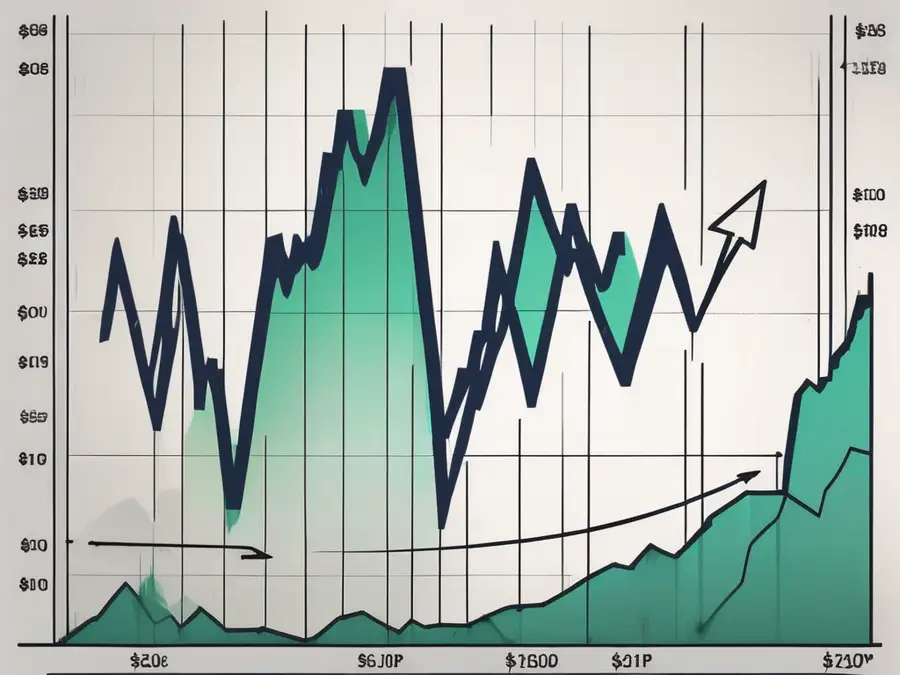What Is EPS in Stocks

Investing in stocks can be a lucrative endeavor, but it's important to have a solid understanding of key financial metrics before diving in. One metric that is widely used and often discussed in the world of stock analysis is EPS, or Earnings Per Share. In this comprehensive guide, I will walk you through everything you need to know about EPS and how it affects your stock investments.
Understanding the Basics of EPS
Definition of EPS
EPS, or Earnings Per Share, is a fundamental financial metric used by investors to gauge a company's profitability. It is calculated by dividing the company's net income by the total number of outstanding shares of common stock. This calculation provides insight into how much of the company's profit is attributable to each share, giving investors a clearer picture of the company's financial performance.
EPS is a key indicator of a company's ability to generate earnings for its shareholders. A higher EPS indicates that a company is more profitable on a per-share basis, which can be an attractive feature for potential investors.
Importance of EPS in Stock Analysis
EPS plays a crucial role in stock analysis as it helps investors compare the profitability of different companies within the same industry. By examining EPS figures, investors can assess which companies are more efficient at generating earnings for their shareholders.
When comparing EPS values of companies, it is essential to consider other factors such as the company's growth prospects, industry trends, and overall financial health. While a higher EPS is generally favorable, it is important to analyze the underlying reasons for the earnings growth and sustainability of the company's profitability.
For instance, if Company A has an EPS of $5 and Company B has an EPS of $3, investors may initially lean towards Company A due to its higher EPS. However, further analysis may reveal that Company B has a more diversified revenue stream and a stronger growth trajectory, making it a more attractive investment opportunity in the long run.
Calculating EPS: A Step-by-Step Guide
Components Needed for EPS Calculation
To calculate EPS, you need two key components: net income and the number of outstanding shares.
Net income represents the company's total earnings after deducting expenses, taxes, and other costs. It can typically be found in a company's income statement or annual report.
The number of outstanding shares refers to the total number of shares held by investors. This information is usually available in a company's financial statements or investor relations publications.
The Formula for EPS
The formula for calculating EPS is straightforward:
EPS = Net Income / Number of Outstanding Shares
Interpreting EPS Values
What a High EPS Indicates
A high EPS suggests that a company is generating substantial earnings relative to its number of outstanding shares. This can be an indication of strong financial performance and profitability. Investors often view companies with high EPS values as more attractive investment opportunities.
What a Low EPS Indicates
Conversely, a low EPS may suggest that a company is struggling to generate earnings. This can be a red flag for investors, as it could indicate underlying issues such as declining sales, increasing expenses, or inefficiencies in the company's operations. Companies with low EPS values may be seen as riskier investments.
EPS and Stock Market Performance
The Relationship Between EPS and Stock Price
EPS plays a significant role in determining a company's stock price. Generally, when a company's EPS increases, its stock price tends to follow suit. This is because higher earnings suggest that the company is performing well and may be more attractive to investors.
However, it's crucial to consider other factors when evaluating stock market performance. EPS should be analyzed in conjunction with factors such as industry trends, market conditions, and competitive landscape to get a comprehensive picture of a company's financial health and potential.
EPS and Market Volatility
EPS can also be influenced by market volatility. During periods of economic uncertainty or market downturns, companies may experience a decline in earnings, which can lead to lower EPS values. Investors should consider the impact of market volatility on EPS when making investment decisions.
As an expert in stock analysis, I've seen firsthand how market fluctuations can impact EPS and subsequently affect investment outcomes. It's crucial to stay informed about the broader market conditions and conduct thorough research before making any investment decisions.
Limitations of Using EPS in Stock Analysis
EPS Manipulation by Companies
While EPS is a valuable metric, it's essential to be aware of its limitations. Some companies may manipulate their EPS figures to present a more favorable financial picture. This can be done through various accounting practices, such as adjusting revenue recognition or manipulating expenses.
As an investor, it's crucial to carefully analyze a company's financial statements and look for any signs of manipulation. This is where having a comprehensive understanding of different financial metrics, including EPS, comes in handy.
EPS Doesn't Reflect the Whole Financial Picture
EPS provides valuable insight into a company's profitability, but it's not the sole indicator of a company's financial health. It's essential to consider other financial metrics, such as revenue growth, debt levels, and cash flow, to get a holistic view of a company's performance.
By taking a well-rounded approach to stock analysis, investors can make more informed decisions and avoid relying solely on EPS figures.
Personal Advice:
When it comes to investing in stocks, my personal advice is to never rely solely on one financial metric, such as EPS, to make investment decisions. It's crucial to conduct thorough research, consider multiple factors, and seek professional advice, if needed. By diversifying your investment portfolio and keeping a close eye on market trends, you can navigate the stock market with confidence.
FAQs – Your EPS Questions Answered
What is EPS?
EPS stands for Earnings Per Share. It is a financial metric that calculates the portion of a company's profit allocated to each outstanding share of common stock.
Why is EPS important?
EPS is essential in stock analysis as it allows investors to evaluate a company's profitability on a per-share basis and make informed decisions about investing.
How is EPS calculated?
EPS is calculated by dividing a company's net income by the number of outstanding shares.
What does a high EPS indicate?
A high EPS suggests that a company is generating substantial earnings relative to its number of outstanding shares, indicating strong financial performance.
Are there any limitations to using EPS in stock analysis?
Yes, EPS has limitations. Companies can manipulate EPS figures, and EPS alone does not provide a comprehensive picture of a company's financial health.
By understanding EPS and its implications, investors can make more informed decisions and navigate the stock market with confidence. Remember to consider EPS alongside other financial metrics and conduct thorough research before making investment decisions. Happy investing!
Now that you're equipped with the knowledge of EPS and its significance in stock analysis, take your investing to the next level with Morpher. Experience a revolutionary trading platform that harnesses the power of blockchain technology to offer zero fees, infinite liquidity, and the ability to trade a vast array of assets. Whether you're interested in stocks, cryptocurrencies, or even niche markets like NFTs, Morpher provides the tools for a unique and comprehensive trading experience. Sign Up and Get Your Free Sign Up Bonus today to start trading with unparalleled flexibility and control.

Disclaimer: All investments involve risk, and the past performance of a security, industry, sector, market, financial product, trading strategy, or individual’s trading does not guarantee future results or returns. Investors are fully responsible for any investment decisions they make. Such decisions should be based solely on an evaluation of their financial circumstances, investment objectives, risk tolerance, and liquidity needs. This post does not constitute investment advice.

Painless trading for everyone
Hundreds of markets all in one place - Apple, Bitcoin, Gold, Watches, NFTs, Sneakers and so much more.

Painless trading for everyone
Hundreds of markets all in one place - Apple, Bitcoin, Gold, Watches, NFTs, Sneakers and so much more.









